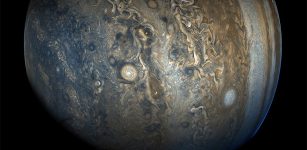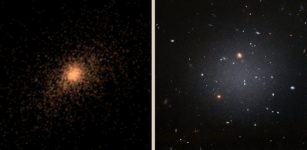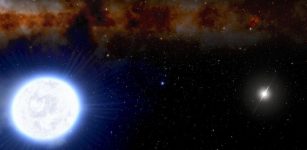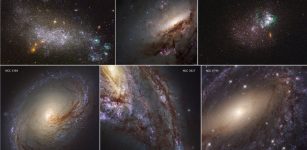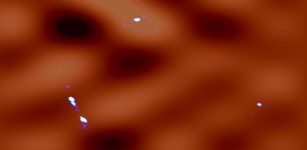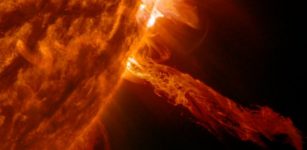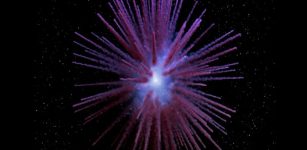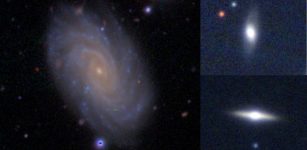Abell 1758: Rare Collision Of Four Galaxy Clusters Will Form Mega-Structure
Eddie Gonzales Jr. – MessageToEagle.com – Collisions between clusters happen and affect their component galaxies as well as the hot gas that surrounds them.
A few months ago, two giant clusters of galaxies were observed during the process of colliding.
Now, astronomers using data from NASA’s Chandra X-ray Observatory and other telescopes have put together a detailed map of a rare collision between four galaxy clusters, which is taking place in the Constellation Canes Venatici, located between Boötes and Ursa Major and Minor.
 X-rays from Chandra are shown as blue and white, depicting fainter and brighter diffuse emission, respectively. In the northern (top) pair seen in the composite image, the centers of each cluster have already passed by each other once, about 300 to 400 million years ago, and will eventually swing back around. The southern pair at the bottom of the image has two clusters that are close to approaching each other for the first time.
X-rays from Chandra are shown as blue and white, depicting fainter and brighter diffuse emission, respectively. In the northern (top) pair seen in the composite image, the centers of each cluster have already passed by each other once, about 300 to 400 million years ago, and will eventually swing back around. The southern pair at the bottom of the image has two clusters that are close to approaching each other for the first time.
Abell 1758 contains two pairs of galaxy clusters. All four clusters — each with a mass of at least several hundred trillion times that of the Sun — will merge to form one of the most massive objects in the universe.
The new observations show a mega-structure being assembled in a system called Abell 1758, a quadruple galaxy cluster system recognized in 2004 and located about 3 billion light-years from Earth. These four are heading toward one another.
 Credit: X-ray: NASA/CXC/SAO/G.Schellenberger et al.; Optical: SDSS
Credit: X-ray: NASA/CXC/SAO/G.Schellenberger et al.; Optical: SDSS
According to Chandra, a tremendous shock wave will be similar to the sonic boom from a supersonic aircraft — in hot gas visible with Chandra in the northern pair’s collision. From this shock wave, researchers estimate two clusters are moving about 2 million to 3 million miles per hour (3 million to 5 million kilometers per hour), relative to each other.
Chandra data also provide information about how elements heavier than helium, the “heavy elements,” in galaxy clusters get mixed up and redistributed after the clusters collide and merge.
Because this process depends on how far a merger has progressed, Abell 1758 offers a valuable case study, since the northern and the southern pairs of clusters are at different stages of merging.
Original story – here
Written by Eddie Gonzales Jr. – MessageToEagle.com Staff

